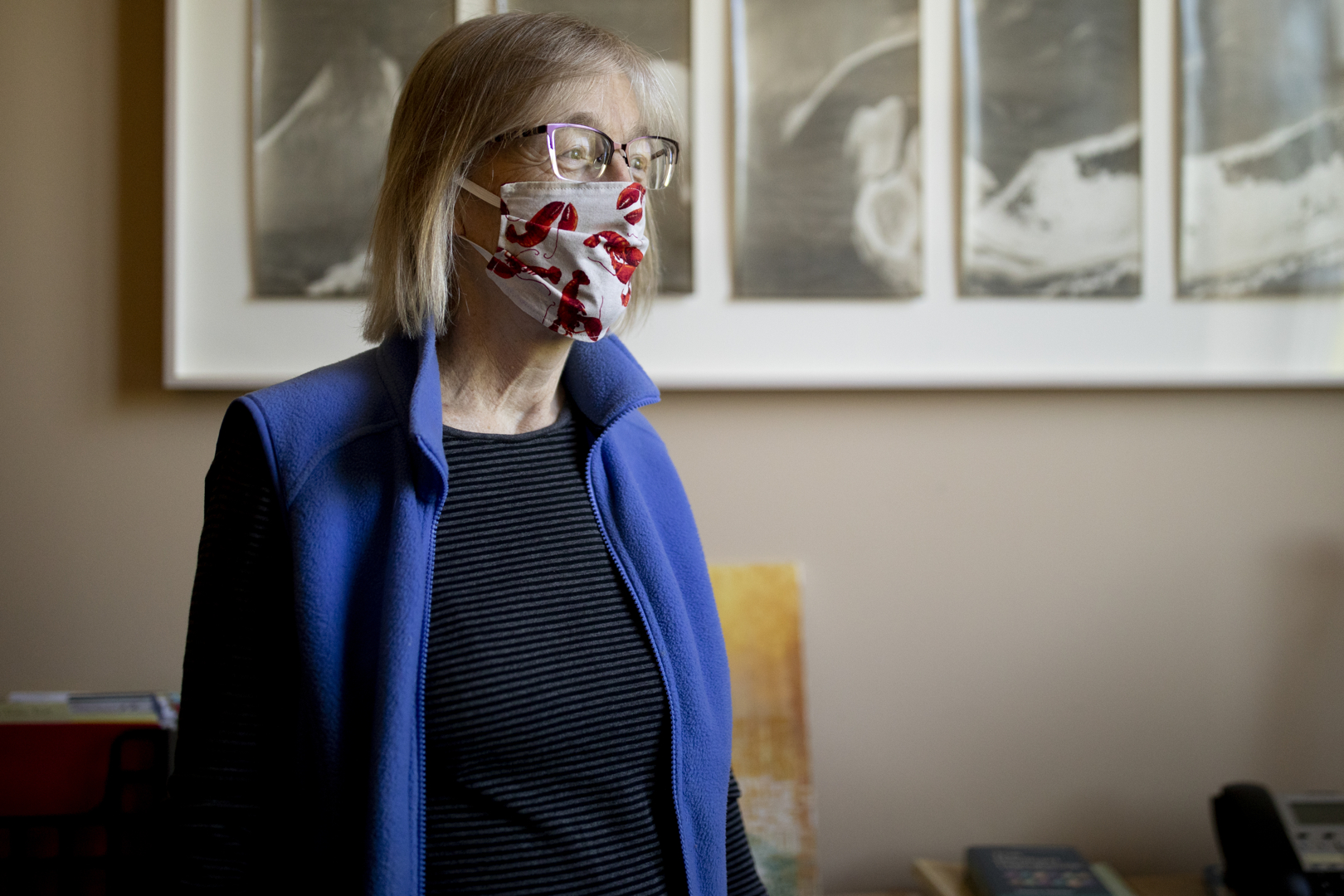
Brunswick planner Holtwijk teaches urban studies

Students enrolled in “Study of the City” visit Boston’s Big Dig, stopping for a behind-the-scenes glimpse of the newly constructed Leonard P. Zakim Bunker Hill Bridge. (Phyllis Graber Jensen/Bates College)
“When you visit a place that’s really interesting, where you want to spend more time — well, how did that come to be? Interesting places don’t happen just by luck,” says town planner Theo Holtwijk. Instead, he says, in many communities those special places have resulted from a painstaking planning and design process.
Students in a seminar this fall are learning about such processes from Holtwijk, one of Maine’s best-known community planners. Director of planning and development for the town of Brunswick, an award-winning landscape architect and co-editor of a well-received history of Portland’s parks, Holtwijk is teaching “Introduction to the Study of the City” for the college’s program.
The course has included two events open to the public. Documenting the City: The New American Ghetto Revisited, a lecture by sociologist-photographer Camilo José Vergara, takes place at 7:30 p.m. Wednesday, Sept. 17, in the Muskie Archives, 70 Campus Avenue.
On Sept. 10, Melissa Paly’s video Livable Landscapes: By Chance or by Choice? was shown.
A 300-level seminar, “Introduction to the Study of the City” will involve among other things a visit to Boston’s “Big Dig” highway project, professional conferences and extensive field work in Lewiston. The last includes the creation of a “neighborhood portrait,” comprising maps, resident interviews, photography and a panel presentation.
“It’s an attempt to have the students experience the place in as many facets as we can conjure up,” says Holtwijk. “I want them to experience it first-hand, because it doesn’t happen enough that people do that and then try to communicate their ideas about it. It’s as much about communicating the reality that they experience in their own way.”
Dutch by birth, Holtwijk has lived in the United States since 1983. He was town planner for Sanford before going to Brunswick in 1997. Named Portland’s Citizen of the Month in 1992, Holtwijk has won various honors for his work including two awards for the book Bold Vision: The Development of the Parks of Portland, Maine, co-edited with Maine historic preservation director Earle Shettleworth (Phoenix Publishing, 1999).
How does an urban studies course figure in an environmental studies program? “In many ways we try to get our students to think about the relationship between ‘nature’ and ‘culture’ — that the two exist in a tight interrelationship with each other, and they’re joined on a continuum, not separated by a sharp divide,” says program chair Jane Costlow, professor of Russian. “And cities — Lewiston as much as any place — are great examples of that,” she says. “What we need is clear thinking and clear planning about how to have urban experiences that are healthy, sustainable and vital.”
An ethnographer as well as a photographer, Camilo José Vergara has spent more than 20 years recording the physical transformations of low-income communities in the nation’s major cities. His books include The New American Ghetto (Rutgers University Press, 1997) and Twin Towers Remembered (Princeton Architectural Press, 2001).
With public attention focused like never before on community planning and land-use issues, particularly sprawl, the timing couldn’t be better to introduce students to the field, says Holtwijk.
“The technical skill of planning is becoming less important than the skill of building consensus,” he points out. “You have to be really smart in how you seek input — the process of seeking input from people is as important as the product that results from it,” because if the process is mishandled, residents may not accept the results whatever their potential, he says.
“Introduction to the Study of the City” is made possible by the Andrew W. Mellon Foundation.




